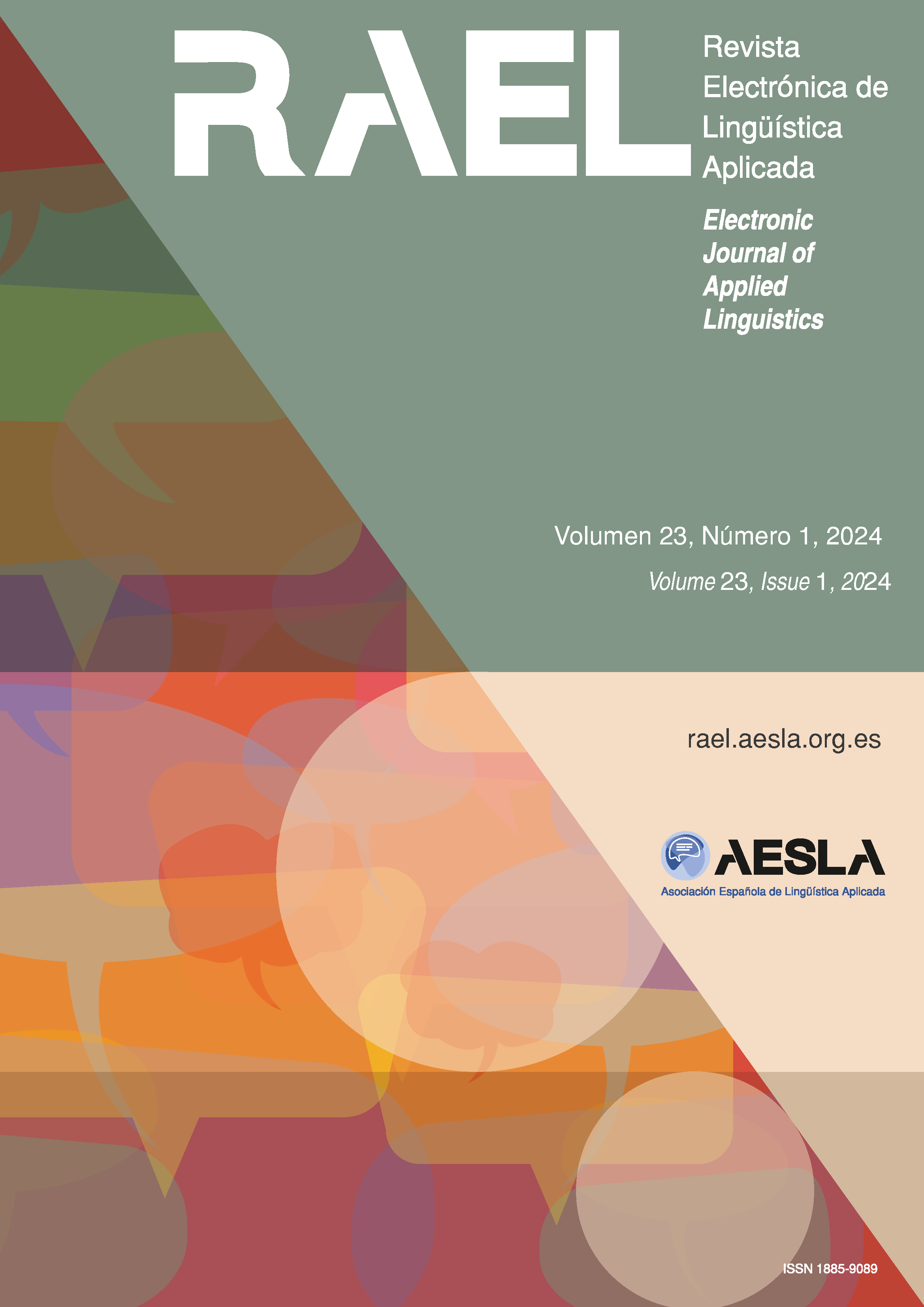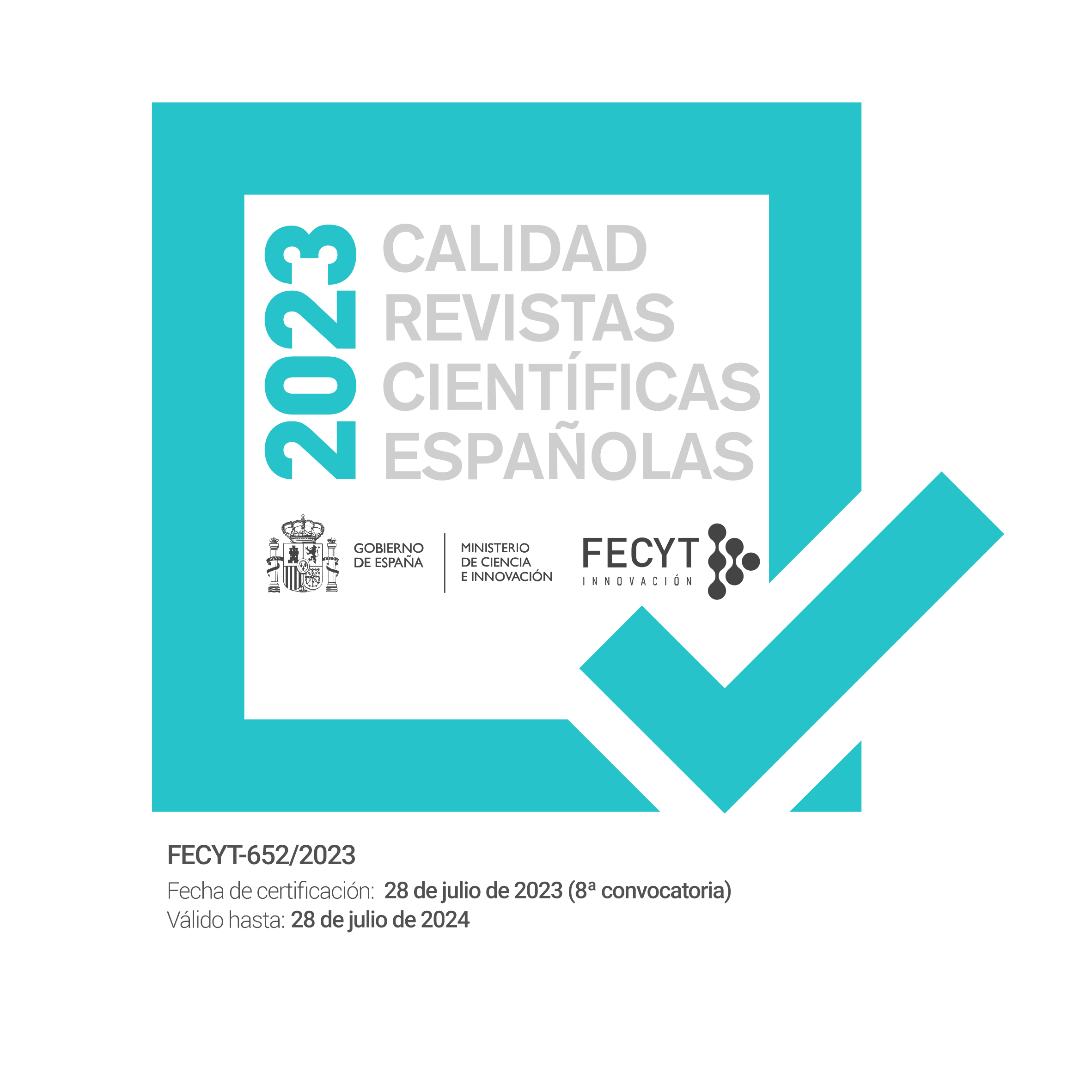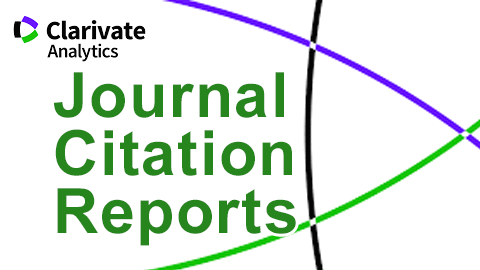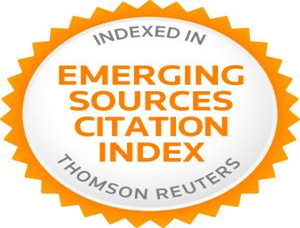¿Tienen GPT-3.5 y GPT-4 un estilo de escritura diferente del estilo humano? Un estudio exploratorio para el español
DOI:
https://doi.org/10.58859/rael.v23i1.666Palabras clave:
estilo de escritura, grandes modelos de lenguaje, GPT-3.5, GPT-4, lingüística de corpusResumen
La cuestión que se aborda en este trabajo de investigación es la comprobación, mediante técnicas estadísticas, de que los modelos generativos de lenguaje GPT-3.5 (versión gratuita) y GPT-4 (versión de pago) de ChatGPT tienen un estilo de escritura distinto al de los humanos, y que pueden diferenciarse, al menos, por tres tipos de rasgos: léxicos, signos de puntuación y estructura sintáctica de las oraciones. Determinar si los grandes modelos de lenguaje tienen un estilo propio es relevante de cara a poder detectar la autoría automática de los textos. En trabajos anteriores se construyó un corpus comparable de textos humanos y automáticos en español y, mediante un estudio cualitativo, se localizó un conjunto de rasgos lingüísticos y estilísticos propios de cada autor. En este trabajo se ha podido comprobar cuantitativamente que 17 variables lingüísticas presentan diferencias estadísticamente significativas entre autores humanos y los modelos GPT-3.5 y GPT-4.
Citas
Alonso Simón, L., Gonzalo Gimeno, J. A., Fernández-Pampillón Cesteros, A. M.ª, Fernández Trinidad, M. y Escandell Vidal, M.ª V. (2023). Using Linguistic Knowledge for Automated Text Identification. En M. Montes y Gómez et al. (Eds.), Proceedings of the Iberian Languages Evaluation Forum (IberLEF 2023), co-located with the Conference of the Spanish Society for Natural Language Processing (SEPLN 2023). Jaén, España, 26 de septiembre. https://ceur-ws.org/Vol-3496/autextification-paper17.pdf
Berber Sardinha, T. (2024). AI-generated vs human-authored texts: A multidimensional comparison. Applied Corpus Linguistics, 4(1). https://doi.org/10.1016/j.acorp.2023.100083
Cañete, J., Chaperon, G., Fuentes, R., Ho, J-H., Kang, H. y Pérez, J. (2020). Spanish pretrained BERT model and evaluation data. arXiv:2308.02976v1. https://doi.org/10.48550/arXiv.2308.02976
Cardenuto, J. P., Yang, J., Padilha, R., Wan, R., Moreira, D., Li, H., Wang, S., Andaló, F., Marcel, S. y Rocha, A. (2023). The Age of Synthetic Realities: Challenges and Opportunities. APSIPA Transactions on Signal and Information Processing, 12(1), 1–62. https://doi.org/10.1561/116.00000138
Casal, J. E. y Kessler, M. (2023). Can linguists distinguish between ChatGPT/AI and human writing?: A study of research ethics and academic publishing. Research Methods in Applied Linguistics, 2(3). https://doi.org/10.1016/j.rmal.2023.100068
Corizzo, R. y Leal-Arenas, S. (2023). A Deep Fusion Model for Human vs. Machine-Generated Essay Classification. En D. Wang y T. Toyoizumi (Eds.), Proceedings of the International Joint Conference on Neural Networks (IJCNN). Gold Coast, Australia, 18-23 de junio. https://doi.org/10.1109/IJCNN54540.2023.10191322
Crothers, E. N., Japkowicz, N. y Viktor, H. L. (2023). Machine-Generated Text: A Comprehensive Survey of Threat Models and Detection Methods. arXiv:2210.07321, Oct. 2023. https://doi.org/10.1109/ACCESS.2023.3294090
Desaire, H., Chua, A. E., Isom, M., Jarosova, R. y Hua, D. (2023). Distinguishing academic science writing from humans or ChatGPT with over 99% accuracy using off-the-shelf machine learning tools. Cell Reports Physical Science, 4(6). https://doi.org/10.1016/j.xcrp.2023.101426
Fernández Vítores, D. (2023). El español: una lengua viva. Informe 2023. En C. Pastor Villalba (dir.), Instituto Cervantes (coord.), El español en el mundo. Anuario del Instituto Cervantes 2023 (pp. 19-142). Madrid: Instituto Cervantes.
Fröhling, L. y Zubiaga, A. (2021). Feature-based detection of automated language models: tackling GPT-2, GPT-3 and Grover. PeerJ Computer Science, 7, 1–23. https://doi.org/10.7717/PEERJ-CS.443
Guo, B., Zhang, X., Wang, Z., Jiang, M., Nie, J., Ding, Y., Yue, J. y Wu, Y. (2023). How Close is ChatGPT to Human Experts? Comparison Corpus, Evaluation y Detection. arXiv:2301.07597v1. https://doi.org/10.48550/arXiv.2301.07597
Hadi, M. U., Al-Tashi, O., Qureshi, R., Shah, A., Muneer, A., Irfan, M., Zafar, A., Shaikh, M., Akhtar, N., Wu, J. y Mirjalili, S. (2023). Large Language Models: A Comprehensive Survey of its Applications, Challenges, Limitations, and Future Prospects. TechRxiv. https://doi.org/10.36227/techrxiv.23589741.v4
He, Z., Mao, R. y Liu, Y. (2024). Predictive model on detecting ChatGPT responses against human responses. Applied and Computational Engineering, 44(1), 18–25. https://doi.org/10.54254/2755-2721/44/20230078
Jawahar, G., Abdul-Mageed, M. y Lakshmanan, L. V. S. (2020). Automatic Detection of Machine Generated Text: A Critical Survey. En D. Scott, N. Bel, y C. Zong (Eds.), Proceedings of the 28th International Conference on Computational Linguistics (pp. 2296–2309). Barcelona: International Committee on Computational Linguistics. arXiv:2011.01314. https://doi.org/10.48550/arXiv.2011.01314
Jurafsky, D. y Martin, J. H. (2024). Speech and Language Processing: An Introduction to Natural Language Processing, Computational Linguistics, and Speech Recognition (3rd ed. draft). Stanford University. Recuperado de https://web.stanford.edu/~jurafsky/slp3/
[...]
Descargas
Publicado
Número
Sección
Licencia
Derechos de autor 2025 Lara Alonso Simón, Ana María Fernández-Pampillón Cesteros, Marianela Fernández Trinidad, Manuel Márquez Cruz

Esta obra está bajo una licencia internacional Creative Commons Atribución-NoComercial 4.0.
Reconocimiento – No comercial (CC BY-NC). Bajo esta licencia el usuario puede copiar, distribuir y exhibir públicamente la obra y puede crear obras derivadas siempre y cuando estas nuevas creaciones reconozcan la autoría de la obra original y no sean utilizadas de manera comercial.
Los autores retienen todos sus derechos de publicación y copyright sin restricciones.









